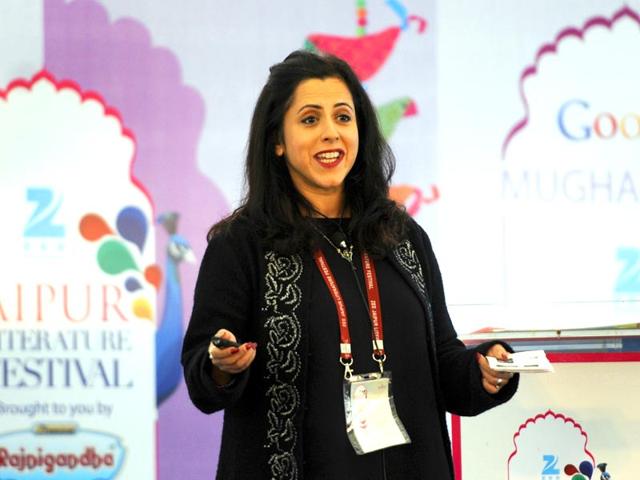JLF 2015: Bringing a princess home
When senior political journalist Anita Anand came across a photograph of a young Indian woman selling The Suffragette newspaper outside Hampton Court in England in 1913 her quest to find out who that woman was lead her to the life of the daughter of the last Sikh emperor Maharajah Duleep Singh.
The story of an Indian princess who spent her life fighting for the right of women to vote in England is not common place.

Few years ago, when senior political journalist Anita Anand was on a maternity leave, she came across a photograph of a young Indian woman selling The Suffragette newspaper outside Hampton Court in England in 1913.
Anand's quest to find out who that woman was lead her to the life of the daughter of the last Sikh emperor Maharajah Duleep Singh, Sophia Duleep Singh, who was, in Anand's words, at once 'a fashionista, a horsewoman, a photographer, a pain-in-the-neck of the establishment and a fighter for women's right to vote'.
The British annexed Duleep Singh's kingdom in 1846, and separated the young boy king from his mother. They kept him for a few years under the care of a Scottish couple in Fateghar where he converted to Christanity before being sent for by Queen Victoria, who loved him immensely.
Born in 1876, Sophia was the youngest daughter of Duleep Singh and his first wife, Bamba Muller. Queen Victoria herself was her godmother.
So, how does this daughter of the exiled king find a purpose to fight for and dedicate a major part of her life doing that?
Narrating this story, Anand kept the audience enthralled at the Mughal Tent in Diggi Palace on Friday afternoon. She was in conversation with writer and diplomat Navtej Sarna on her book 'Sophia: Princess, Suffragette, Revolutionary'.
Anand said discussing the book at the JLF was like 'bringing the princess home'.
Duleep Singh who had begun to lead a colourful life in London had a sudden realisation about his lost kingdom and wanted to win his land in India back. For the most part of his later life, in Navtej Sarna's words, Duleep Singh was 'a crazy rebel who went all around Europe trying to put up a resistance against the British rule in India.' He started gambling and drinking and went into debt abandoning his six children and wife.
By the time Sophia was seventeen, she had lost both her parents and was overcome by extreme grief. Soon, she turned herself into a socialite, engaging herself with jewellery and becoming a hot pick for the gossip columns of magazines.
It was then that she visited India twice with her sister Catherine in 1903 and 1907 and met freedom fighters Lala Lajpat Rai and Gopal Krishna Gokhale who influenced her and enthused her with thoughts about freedom from the British Raj.
Sophia returned to England a changed woman and soon engaged herself with the Suffragette movement taking an active part in processions and protests. She even fought with the police during the famous Black Friday march in London on November 18, 2010.
During the World War I she worked as a nurse and raised money for injured Indian soldiers, who were in for a shock as to how a princess herself was treating them.
"Before her death, in 1948, she was asked to contribute to Who's Who her entry was brief. She wrote: ''The Advancement of Women,'' said Anand.
Anand added, "I believe Sophia is someone who has given me my right to vote. I owe it to her."
Was the Kohinoor gifted to the British?
Maharaja Duleep Singh owned what was then the largest diamond in the world, the Kohinoor (now part of the Crown Jewels).
When someone from the crowd asked the panelists whether it was gifted by Duleep Singh to the British or was it snatched away?
"The Kohinoor was definitely not gifted to the British. How could a young boy who was so tormented at that time gift someone like this," said Anand.
Sarna explained how the Kohinoor was acquired from the king's Toshakhana by the British and sent away by Lord Dalhousie to the Queen.
Anand added, "In fact, I have read records as how Victoria felt guilty wearing that diamond when Duleep was present."




